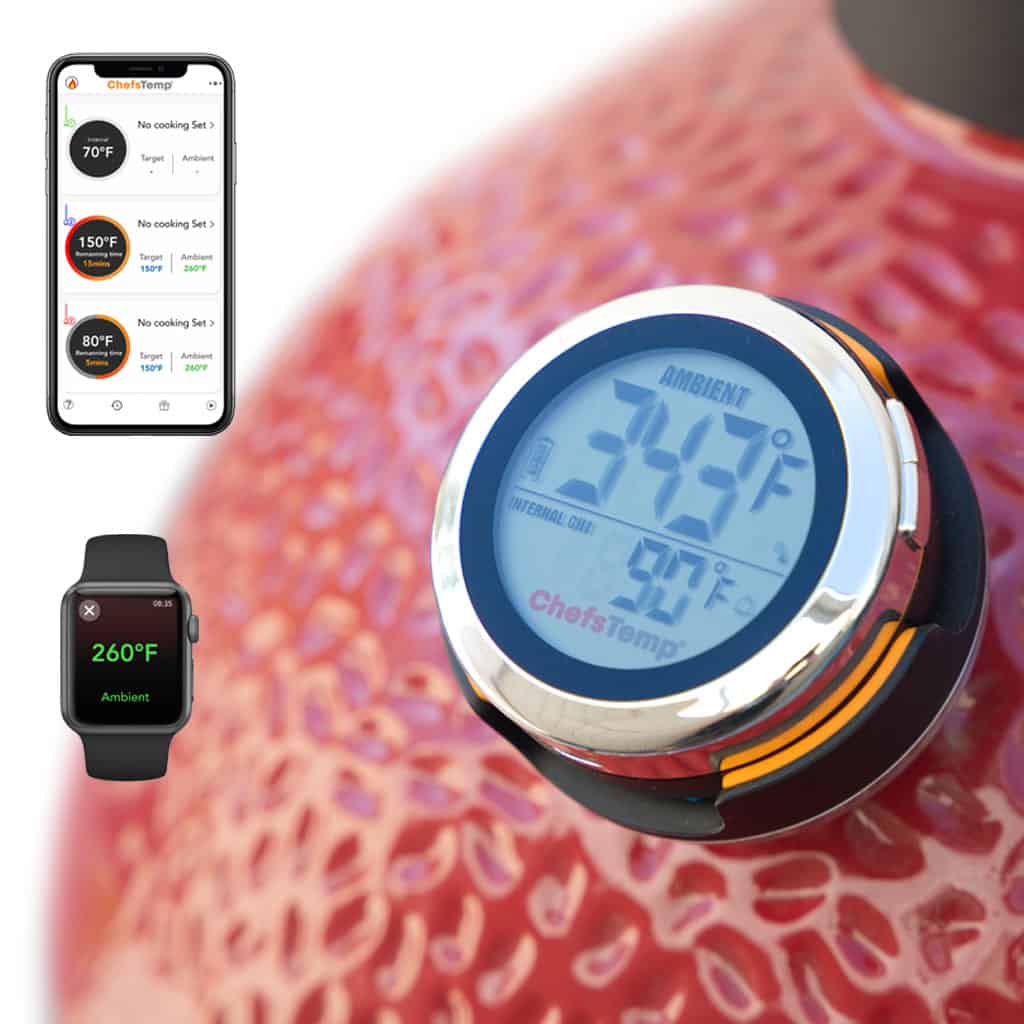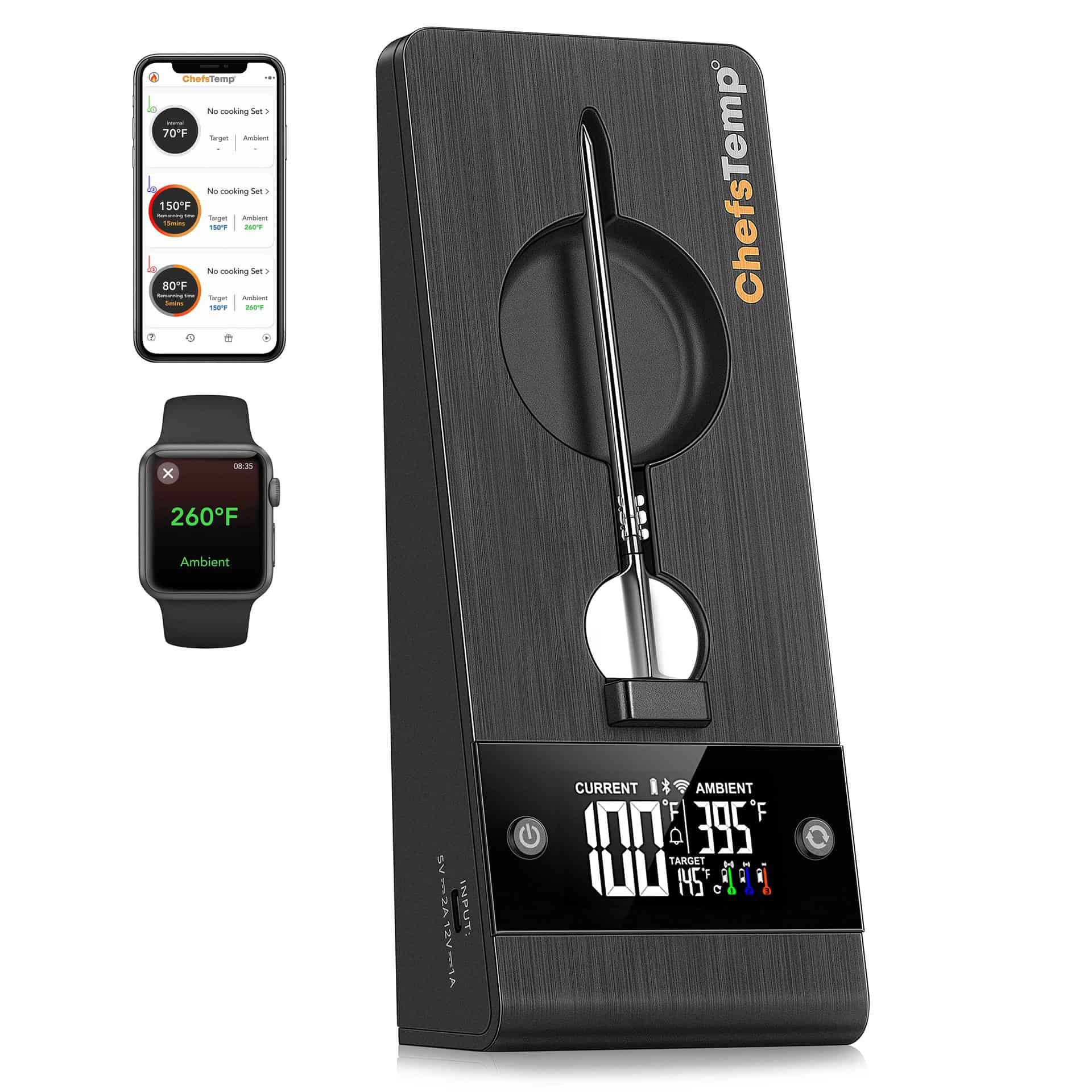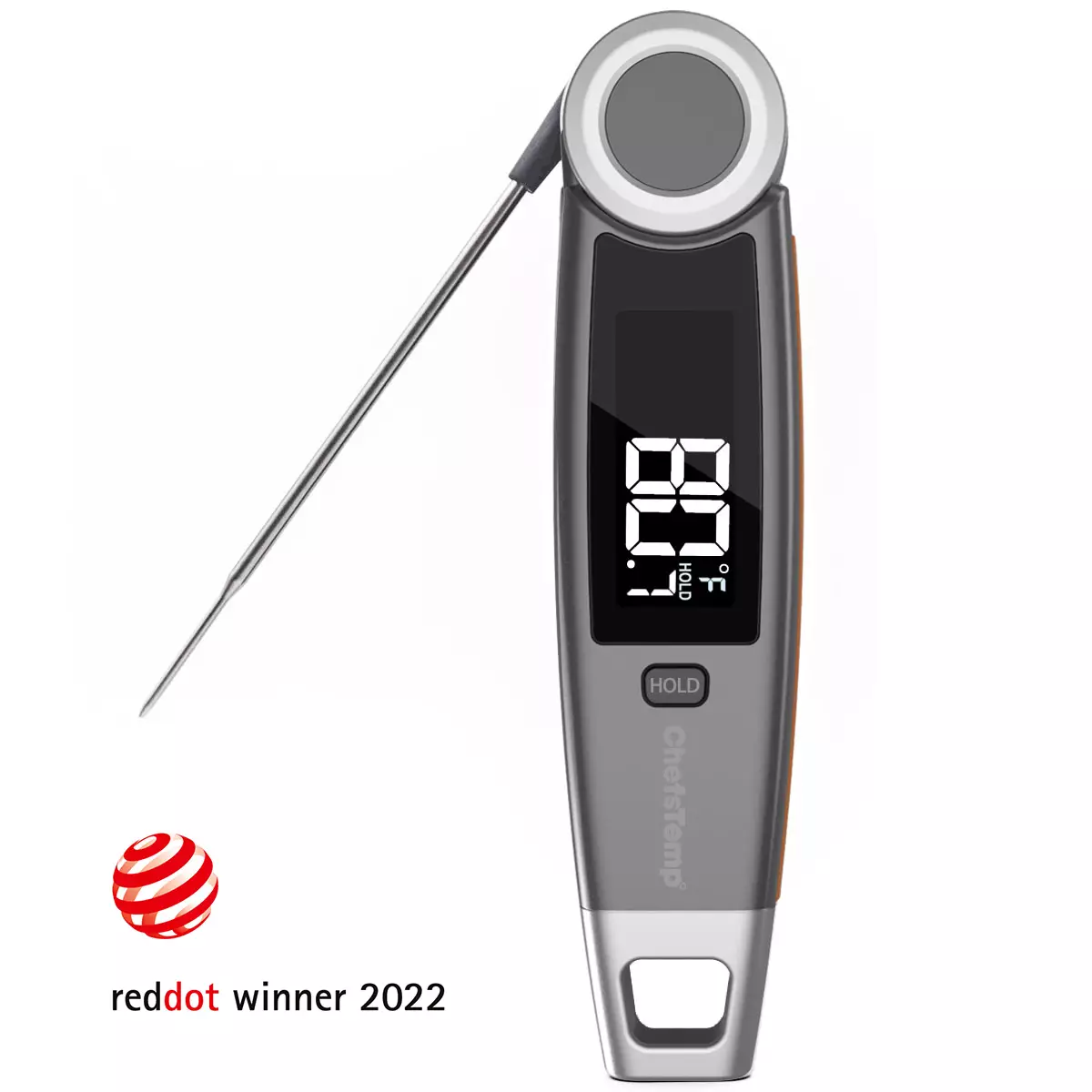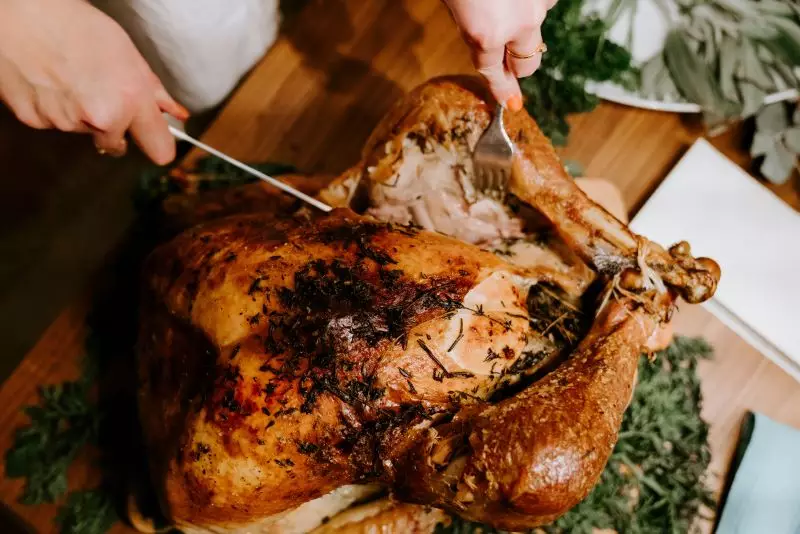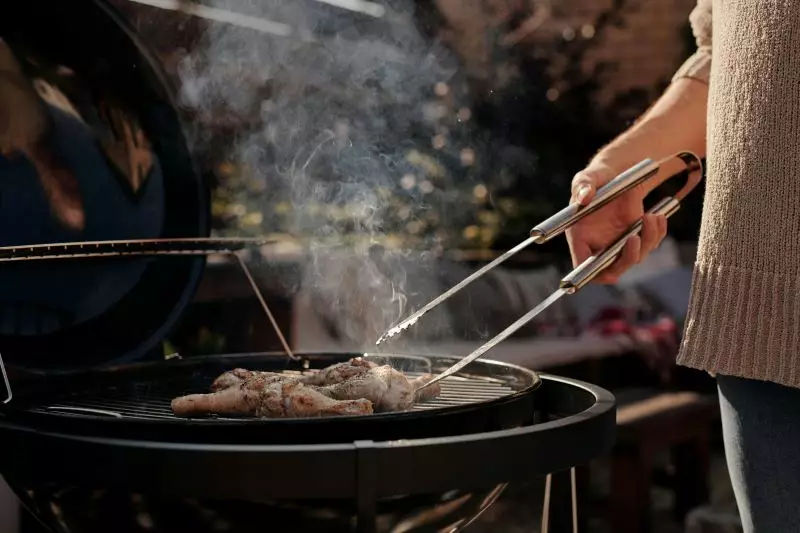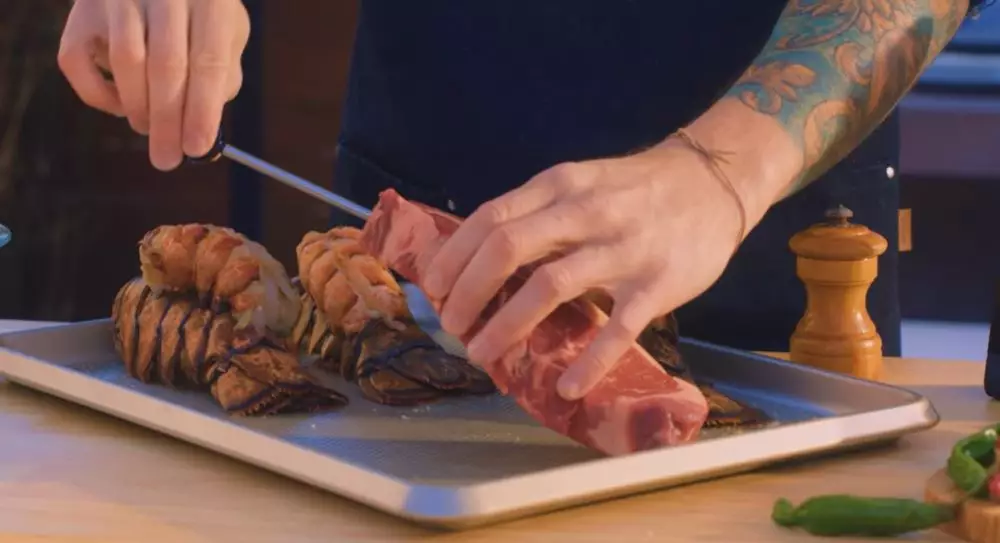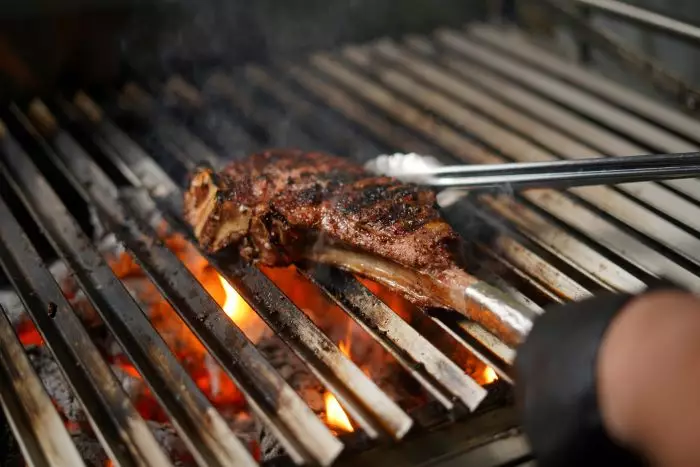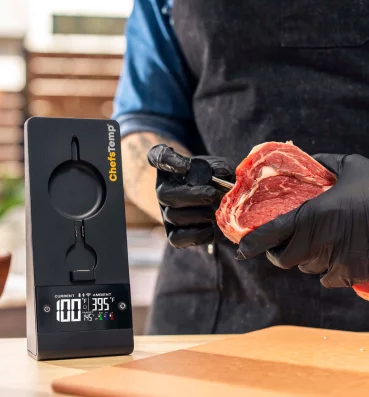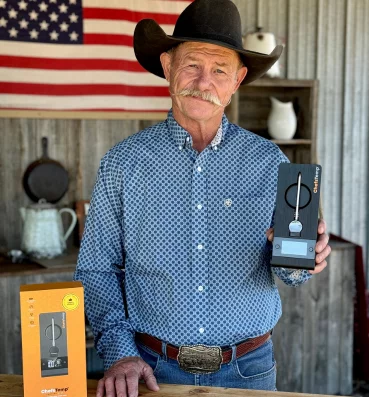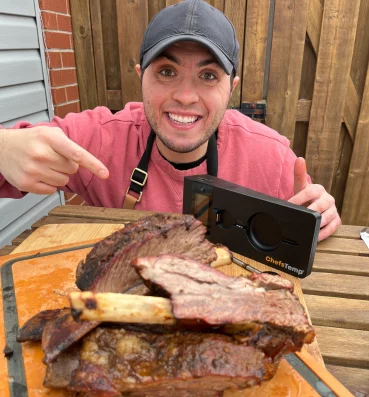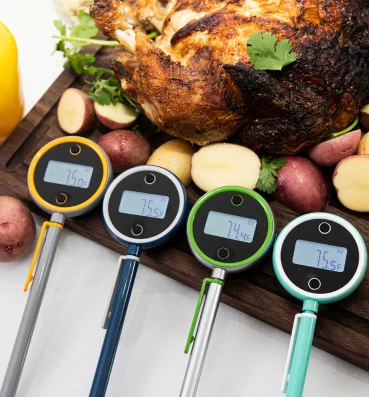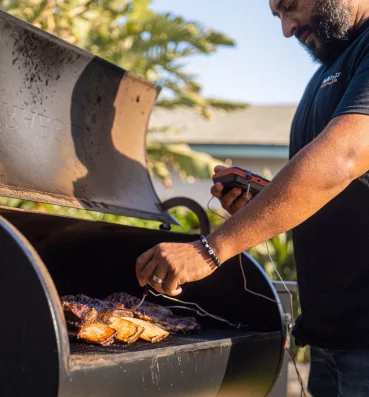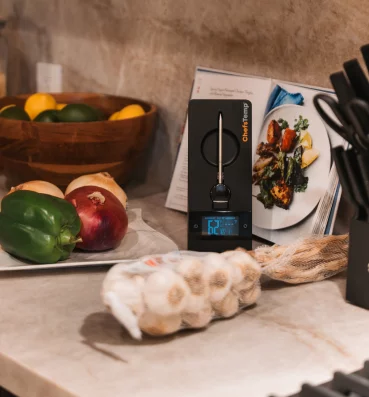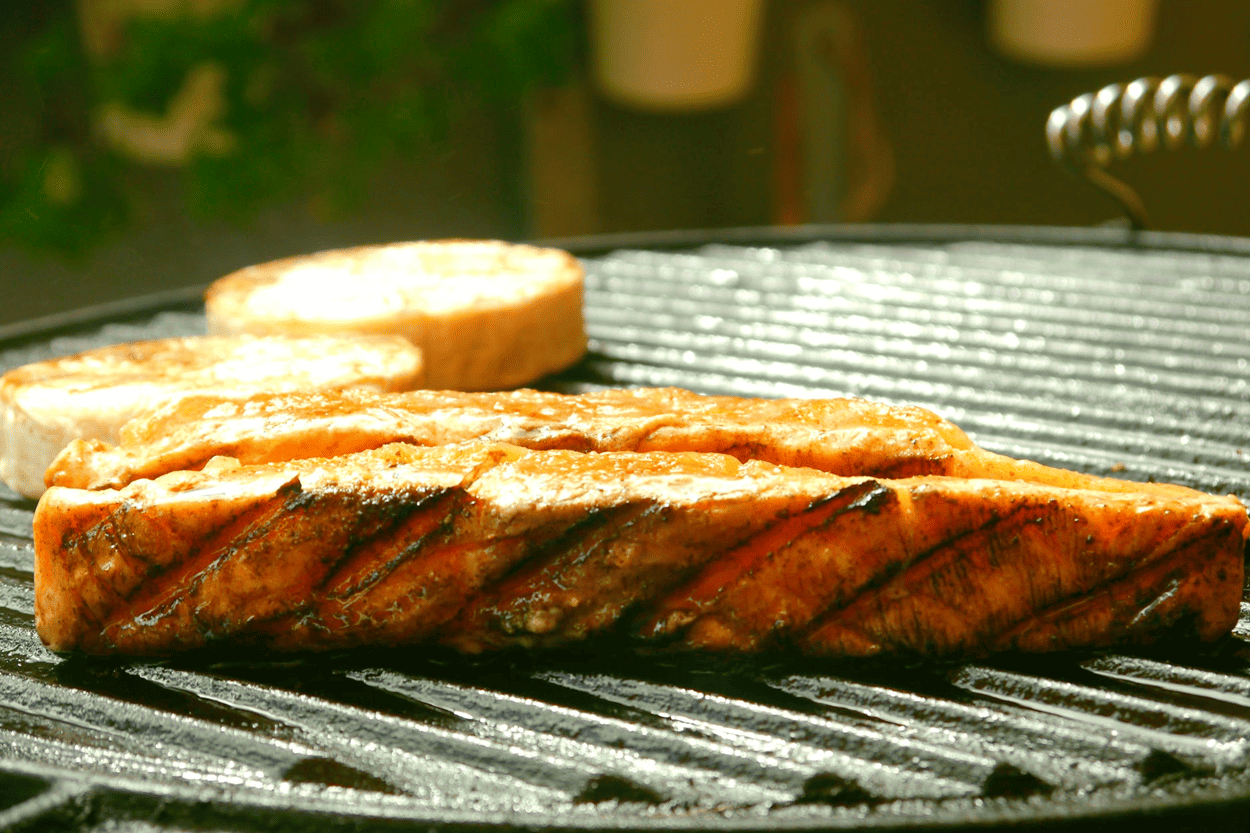
The Biggest Mistakes You Make When Using an Instant Read Thermometer
An instant read thermometer is an absolute must-have in every kitchen. Knowing how to use it, however, is even more important.
There are a lot of mistakes people make using a digital thermometer.
Being aware of these and knowing how to properly use your digital food thermometer is of utmost importance to keep you and your loved ones safe and healthy.
This article will dive deep into the 6 common mistakes people make when using an instant read thermometer, along with solutions for each one of them.
Table of Contents
Mistake 1: Using an infrared thermometer to test internal temperature
Infrared thermometers are designed to measure the surface temperature of foods and liquids.
Using them to check foods internal temperature will not work and will lead to inaccurate temperature readings, since the surface temperature tends to usually be different from the internal temperature for most foods.
The best way to check a food’s internal temperature is using a probe thermometer. The probe penetrates the temperature layers and gets to the thermal center of the foods, giving you an accurate measure of the food’s internal temp.
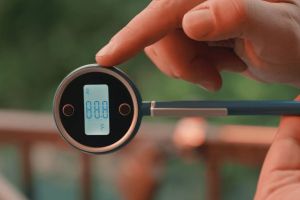
Mistake 2: Not using the instant read thermometer correctly when temping nonsolid foods
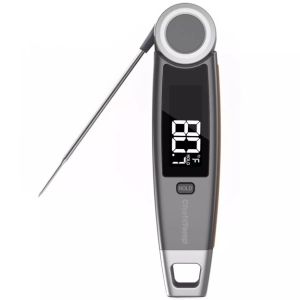
There are different layers of temperature. They are called gradients of temperature. These temperature gradients exist in ovens, fridges, coolers and foods, especially liquids and semi- liquids.
When cooking soup, for example, you’ll notice that it cooks faster from the bottom and the middle than the top. When cooling it down, however, the exact opposite happens, with the top cooling faster than the middle and the bottom of the soup.
Merely sticking a probe into the soup without being aware of these gradients will give you a false temperature reading.
Here are a few tips to help you take correct and accurate readings when temping non solid foods:
- Stir thoroughly to even out the temperature of the food
- Guide the probe to the center of the food
- Make sure it doesn’t touch the bottom of the pot
- Finally, temp the food. The safe internal temperature for soup is 165°F( 74°C).
To make sure you get an even more accurate measurement, keep stirring the food with the probe for a few seconds, while temping it, until the temperature on the thermometer screen stabilizes.
Mistake 3: Failing to use the thermometer properly when temping solid foods
While it is relatively easy to find the thermal center for liquid and semi liquid foods, it is a little bit tricky when dealing with solid foods, especially chicken.
Chicken cooks at different internal temperatures. For example, chicken breasts cook at a lower temperature, compared to thighs and drumsticks.
That’s why cooking both, the dark and white meat, to a safe temperature is crucial to make sure the whole bird is safe to eat.
Here is how to properly temp a whole chicken:
- Find the thickest part of the breast.
- Tilt the thermometer probe slightly and stick it in.
- Make sure the probe doesn’t touch the bones.
- Take the measurement. The thermometer should read 165°F(74°C).
- For thighs and drumsticks, do the same thing. These should be cooked to an internal temp of 175°F(79°C).
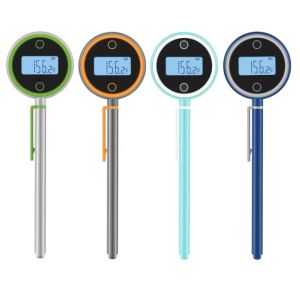
Mistake 4: Not using an accurate digital thermometer
Using an inaccurate instant read thermometer is a common mistake people make. To test how accurate a digital thermometer is, people often use the famous ice bath method.
While this is an effective way to check how accurate your digital food thermometer is, it is easy to do it the wrong way. Simply inserting your thermometer probe in a cup or a container full of water and ice won’t give you a correct reading.
Follow these tips to go about preparing an ice bath for a correct and accurate temperature check:
- Fill a wide and tall glass with ice.
- Add cold water.
- Stir thoroughly and let rest for 1 to 2 minutes.
- Insert your thermometer probe into the glass.
- Make sure it doesn’t touch the sides or the bottom of the glass.
- Check the reading. The thermometer should read 32°F(0°C).
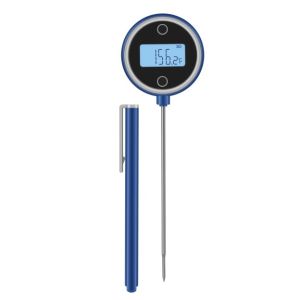
If you get a reading of more or less than 32°F(0°C), you can do two things. Most digital thermometers come with an offset button. If yours has it, you can recalibrate it using that button.
If not, take note of the difference and remember to subtract from or add to your reading next time you use the electronic meat thermometer to check your food temperature. Two to three degrees of difference shouldn’t be a problem. However, if the difference is more than that, consider buying a new one.
Mistake 5: Not cleaning your thermometer between temp tests
Most perishable foods, especially meat, when not cooked to a certain internal temperature, offer an ideal environment for pathogens to live and multiply. When cooking these foods, most people use an instant read thermometer to temp the food. The mistake most of them make is that in between the temperature tests, they forget to clean the thermometer probe.
While cleaning a probe thermometer between the temp tests is an obvious thing to do, most people overlook it. That may expose you and your family to serious foodborne illness.
Next time you want to take your food temperature, for safety purposes, it’s imperative that you clean it before and after use. The cleaning process is easy and won’t take you a lot of time.
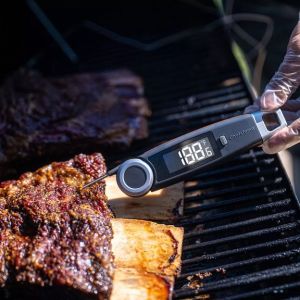
Simply wash the thermometer probe with hot water and soap and you are good to go.
Mistake 6: Using paper logs, instead of digital ones
We live in a digital world, where tracking, storing, and easily accessing your food temperature logs is done automatically, yet so many chefs are still using paper HACCP logs to record their food temperature.
Although HACCP paper logs are used mainly by professional chefs, there are a lot of regular people who do use them too.
Whichever category you fit in, paper HACCP logs aren’t the most time efficient way to keep track of your food’s temperature. They are also hard to navigate and store. More importantly, they are very prone to error.
Today, most kitchen thermometers can take accurate readings of your food temperature at different intervals, transfer the data to secure and wireless digital logs that you can then access on your PC or phone whenever and wherever you are.
These digital data loggers not only eliminate human errors, but also provide you with a reliable archive of your food temperature for future use.
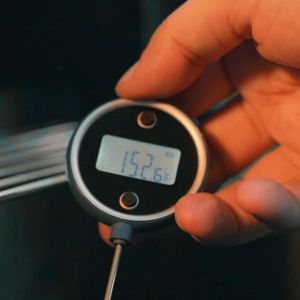
Final Thoughts
Using an instant read thermometer shouldn’t be a problem now that you are aware of these mistakes and how to avoid them. With the tips outlined above in mind, you can now safely use your digital thermometer to help you cook your food to accurate and healthy internal temperatures.
Discover Other ChefsTemp Products
Discover more recipes and learn kitchen tricks by joining our cooking family on Facebook.
You may also like:
